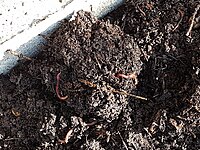
Effect of soil particle size on the kinetics of Cu release from field-contaminated soils: Experiments and a quantitative model
Sign Up to like & getrecommendations! Published in 2020 at "Chemical Geology"
DOI: 10.1016/j.chemgeo.2020.119780
Abstract: Abstract Predicting the kinetics of heavy metal release from the field-contaminated soils requires the consideration of the chemical and physical heterogeneity of soil composition, such as multiple soil adsorbents, heterogeneous binding sites, and varying soil… read more here.
Keywords: microscopy; field; soil particles; size ... See more keywords

Weak size dependence of resuspended radiocesium adsorbed on soil particles collected after the Fukushima nuclear accident.
Sign Up to like & getrecommendations! Published in 2017 at "Journal of environmental radioactivity"
DOI: 10.1016/j.jenvrad.2017.03.001
Abstract: Most studies of the properties of airborne radionuclides emitted from the Fukushima Daiichi Nuclear Power Plant have focused on the relatively early stages of the accident, and little is known about the characteristics of radiocesium… read more here.
Keywords: radiocesium; radiocesium adsorbed; size dependence; soil particles ... See more keywords

Machine Learning Approaches for Analysis of Multiscale Imaging Data for Atmospheric and Soil Particles
Sign Up to like & getrecommendations! Published in 2019 at "Microscopy and Microanalysis"
DOI: 10.1017/s1431927619001703
Abstract: Bioaerosol and soil organic particles are ubiquitous in the atmosphere, and they are multicomponent and complex in nature [1-4]. Biological particles contribute to a major fraction of coarse mode particles, especially in the tropical areas,… read more here.
Keywords: soil; mixing state; soil organic; learning approaches ... See more keywords

Food-burying behavior in red imported fire ants (Hymenoptera: Formicidae)
Sign Up to like & getrecommendations! Published in 2019 at "PeerJ"
DOI: 10.7717/peerj.6349
Abstract: The food-burying behavior has been reported in many mammals and birds, but was rarely observed in invertebrates. The red imported fire ants, Solenopsis invicta Buren, is an invasive pest in many areas of the world… read more here.
Keywords: food burying; imported fire; burying behavior; soil particles ... See more keywords